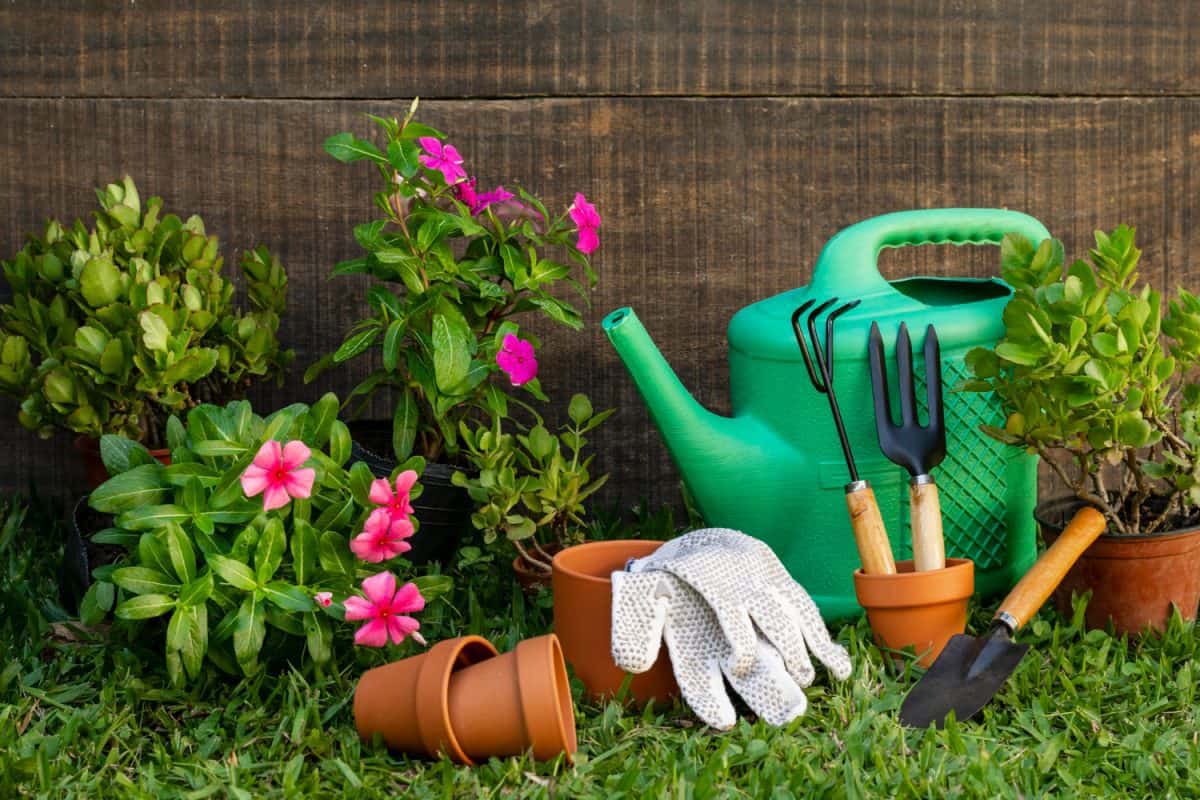
There is something to do in a home garden at any time of year. In the winter the garden doesn’t sleep but dormant – and it needs looking after too. With the onset of spring the plants slowly awaken from their winter slumber and begin to require more attention. Find out what work you can do in your garden in each month and how to plan for year-round garden care.
To keep your garden in good condition you need to care for and look after your plants regularly during the cold months too. The winter period should not be regarded as a break from gardening. Start pruning your trees and bushes as early as February and slowly prepare for new sowings and seedlings in March. Learn about the entire gardening calendar so you can plan everything at the right time.
You might think that there is nothing to do in the garden during the winter – but that is a mistake. Plants which are dormant under a blanket of snow are in a state of dormancy, but they cannot be left to their own devices. From time to time we should check how the plants are overwintering, improve their covers if necessary and shovel snow regularly. Heavy snow can turn to ice and cause branches to break and shrubs to deform
When clearing snow from your garden paths you should not push it onto the lawn – the compacted snow melts slowly and can cause the grass to rot. It is best to avoid walking on the lawn in winter – weakened blades of grass can easily break.
February is the time when we start pruning the branches of trees and shrubs. It’s best to make the first nurturing cuts at the end of the month. Keep in mind, however, that only certain species can be pruned at this time. Trees which produce abundant sap, such as birch, maple and hornbeam, are pruned between June and September
In March, we can start pruning the boxwood and yew hedges – the best time to do this is mid-March. You can also slowly remove winter protection from plants. In the case of the more fragile specimens, however, you should still bear in mind possible frosts
Start cleaning up the lawn. If the snow has already melted, rake up leaves, sticks and dry grass. Also fill in molehills and level the surface
April is a good time for planting new trees, evergreen shrubs and conifers. It’s also the time to mow the grass for the first time as the grass starts to grow intensively. At the end of the month you can plant bulbs and tubers that don’t overwinter in the ground, such as dahlias, gladioli, freesias, lilies, tiger peacocks and galtons. The best time to start planting is when the ground temperature has already reached 10 degrees Celsius.
In May the intensity of garden work increases. That’s when you should be mowing the grass regularly and trimming the hedges to make sure they don’t get too thick. Also cut back the blooms of bulbs and break off the blooms of rhododendrons
May is the time to plant trees, shrubs, climbers and perennials grown in pots. You can also start planting flowering annuals such as nasturtiums, marigolds, marshmallows, and sunflowers. After May 15, plant seedlings of seasonal flowers such as begonias, lobelias, geraniums, marigolds, impatiens, and petunias in containers and pots.
June is a time of intensive growth. We also expect the first harvests. Remember to water and fertilize container-grown seasonal flowers regularly. In June dig out spring-flowering bulbous plants which have already withered. Trim and shape hedges. You can also start propagating perennials that have finished flowering. This is also the time for ivy propagation. Don’t forget to systematically weed the beds with ornamental plants.
During this hot month plants need extra care. Intensive watering, fertilising, weeding and protecting against diseases and pests are things you should not forget during this time. Stake tall plants in beds, trim back those which have already flowered and inspect plants regularly to check for disease
Throughout the month, remove flowering perennials and roses. At the beginning of August, moldering hedges are pruned for the last time. The beginning of the month is also the time for pruning lavender. If there is no heat or drought, we can plant container-grown trees, shrubs and perennials. At the end of August, plant some species of spring bulb flowers such as crocuses, snowdrops, chinchillas, and hermitsias. We also collect seeds of annual plants that we will sow in the spring.
September is the time to plant most of the spring-flowering bulbs, such as tulips, hyacinths, snowdrops, crocuses and sapphires. If the month is dry, we still water the plants regularly. In perennial beds and under shrubs you can replenish the mulch layer. Remove all dead and diseased plant shoots
October is the time for the last planting of container grown perennials. We can also plant trees and shrubs with the so-called bare root. If you didn’t do it the previous month, plant spring-flowering bulbs. At the end of the month, dig up perennials that don’t overwinter in the ground. Regularly rake the lawn and clear the beds of leaves. Dispose of plant debris on the compost heap. Clean pots and boxes after growing seasonal plants
In November we clean up the perennial beds. Cover frost-sensitive plants with a layer of leaves. If temperatures drop below freezing, cover sensitive plants with straw or fleece. Protect columnar conifers by bundling them. Rake the last fallen leaves.
The main tasks during the winter months are to check whether the plants are well protected and to remove excess snow. If you haven’t done so already, replenish the mulch layer in frost-sensitive plant beds and cover plants against frost. Remember to shake excess snow off tree and shrub branches regularly.